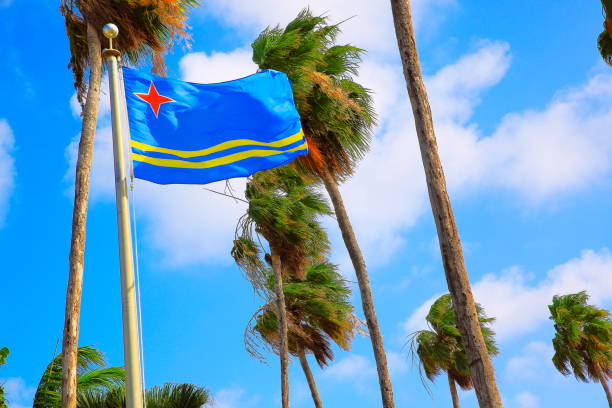(Oranjestad)—You may have noticed these past few days a few Aruban flags waving in the wind while cruising around the island. This is in connection to our National Hymn and Flag Day, which takes place next week Monday, March 18th.
Our flag is especially dear to us, as it represents both our Aruban identity as well as the fight for our autonomy within the Dutch Kingdom. Here is a quick overview of the symbols embedded in our flag.
Along with the Aruban national anthem, the Aruban flag was adopted on March 18th 1976. To find the perfect design for our flag, the island council organized competition on the island where hundreds of designs were submitted. The Flag Commission, which consisted of Epi Wever, Julio Maduro and Roland Donk were left in charge of picking the perfect design. Their goal was to find a flag that is quite simple, yet unique and representative to the Aruban identity.
The Aruban flag consists of four different colors, each with its own significance. The blue color represents the clear blue sea surrounding us, and our connection to the ocean. The two yellow stripes represent our distinct status within the Dutch Kingdom—back then a first within the west colonies. The yellow color of the stripes represents our economic prosperity derived from tourism as well as industries such as gold mining and production of Aloe Vera. The bright yellow color is also representative of our local flora, such as the Kibrahacha, Pal’i Brazil and Wanglo among others.
The 4-point star symbolizes the origins of the Aruban community; a melting pot of different cultures and identities from other parts of the Caribbean, Europe and the Americas. The red color is symbolic of our red soil, and pays homage to our indigenous ancestors, whom were the first inhabitants on the island. The white outline of the star symbolizes our white sandy beaches, as well as peace and the commitment to strive for justice, order and liberty.




















